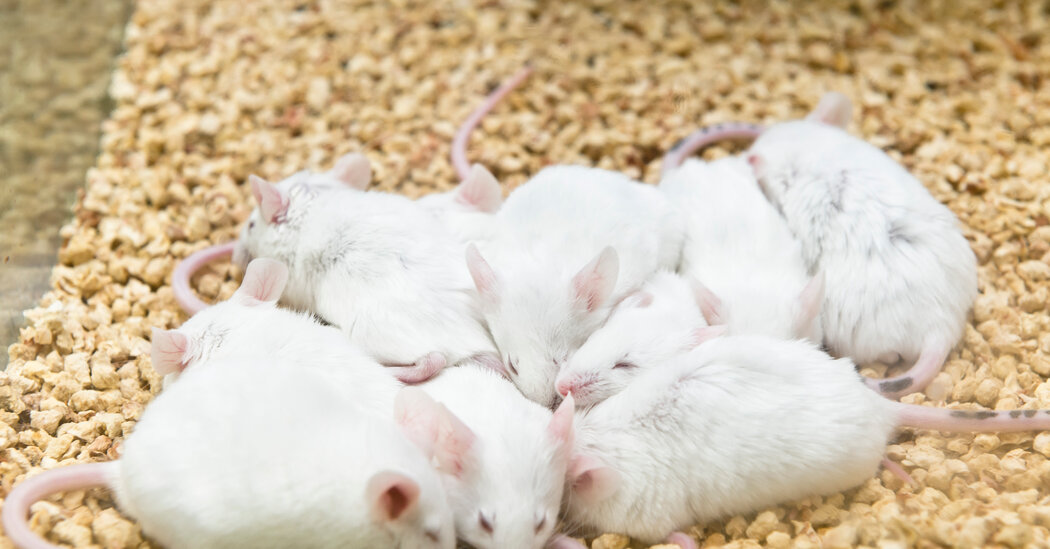

For many animals, life is a cycle of scarcity as well as plenty. Hibernating creatures curl up underground in winter, slowing their metabolism so they can make it to spring without food. Even laboratory mice, if deprived of food, can enter a state called torpor, a kind of standby mode that economizes energy.
It’s something humans have long fantasized about for ourselves: If we ever leave this planet and travel through space, we will experience our own time of scarcity. Science fiction writers tend to imagine a mysterious technology that keeps humans in stasis, able to survive centuries of silence before emerging into a new life. For now, it’s a technology that’s out of reach.
But as scientists work to understand states like torpor and hibernation, tantalizing details about how the brain controls metabolism have emerged. Researchers reported in the journal Nature Metabolism on Thursday that they’ve been able to send mice into a torpor-like state by targeting a specific part of the brain with short bursts of ultrasound. It’s unclear exactly why ultrasound has this effect, but the findings suggest that studying the neural circuits involved in torpor could reveal ways to manipulate metabolism beyond the lab.
Ultrasound devices, which generate high-frequency sound waves, are best known for their imaging powers. But they have also been used by neuroscientists to stimulate neurons. Correctly tuned, the soundwaves can travel deep into the brain, said Hong Chen, a professor of biomedical engineering at Washington University in St. Louis and an author of the new paper. In 2014, William Tyler, now at the University of Alabama, Birmingham, and his colleagues applied ultrasound to a sensory region in the brain and found that it enhanced a subject’s sense of touch. A growing body of work is exploring ultrasound as a treatment for disorders like depression and anxiety.
Curious about a brain region that regulates body temperature in rodents, Dr. Chen and her colleagues constructed tiny ultrasound mouse caps. The devices trained six bursts, each consisting of 10 seconds of ultrasound, on the selected area of the rodent’s brain. (Researchers who study the brain with ultrasound must tune their devices carefully to avoid heat that can damage tissues).
The mice, the researchers noticed, stopped moving. Measurements of their body temperature, heart rate and metabolism showed a pronounced dip. The mice stayed in this state for about an hour after the ultrasound bursts, and then returned to normal.
Looking closer at neurons involved in this response, the researchers identified a protein in their brain membranes, TRPM2, that appears to be sensitive to ultrasound; when the researchers reduced levels of the protein in mice, the mice became resistant to ultrasound’s effects.
That’s an important step toward understanding how ultrasound affects neurons, said Davide Folloni, a researcher at the Icahn School of Medicine at Mount Sinai in New York City, who studies the brain using ultrasound; the details have largely been elusive.
But it’s also possible that heat generated by the ultrasound, and not just the ultrasound itself, is affecting TRPM2 in the brains of mice, a point that was raised by Masashi Yanagisawa and Takeshi Sakurai of the University of Tsukuba in Japan, in separate interviews. The two have studied neurons in this brain area, and their connection to states of torpor. Both may be in play, Dr. Chen said.
In one of the most tantalizing parts of the study, the researchers checked to see whether animals that don’t typically experience torpor — rats — behaved differently when the brain region was stimulated with ultrasound. Indeed, they seemed to slow down, and their body temperatures dropped.
“We have to be careful with the rat data,” Dr. Chen cautions. So far, they only have information about temperature, not metabolic rate and other factors.
Could ultrasound be a way to change the metabolism of larger animals with no history of torpor, like humans? It’s an intriguing idea, Dr. Sakurai said.
“At this stage,” he said, “it remains an unanswered question.”
24World Media does not take any responsibility of the information you see on this page. The content this page contains is from independent third-party content provider. If you have any concerns regarding the content, please free to write us here: contact@24worldmedia.com

Common Mistakes When Using Athletic Field Tarps

High-Performance Diesel Truck Upgrades You Should Consider

Warehouse Optimization Tips To Improve Performance

Fire Hazards in Daily Life: The Most Common Ignition Sources

Yellowstone’s Wolves: A Debate Over Their Role in the Park’s Ecosystem

Earth Day 2024: A Look at 3 Places Adapting Quickly to Fight Climate Change

Millions of Girls in Africa Will Miss HPV Shots After Merck Production Problem

This Lava Tube in Saudi Arabia Has Been a Human Refuge for 7,000 Years

Four Wild Ways to Save the Koala (That Just Might Work)

National Academy Asks Court to Strip Sackler Name From Endowment

Ways Industrial Copper Helps Energy Production

The Ins and Out of Industrial Conveyor Belts